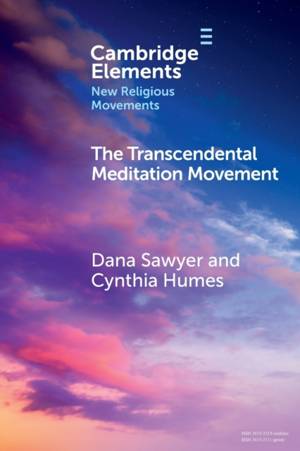
Je cadeautjes zeker op tijd in huis hebben voor de feestdagen? Kom langs in onze winkels en vind het perfecte geschenk!
- Afhalen na 1 uur in een winkel met voorraad
- Gratis thuislevering in België vanaf € 30
- Ruim aanbod met 7 miljoen producten
Je cadeautjes zeker op tijd in huis hebben voor de feestdagen? Kom langs in onze winkels en vind het perfecte geschenk!
- Afhalen na 1 uur in een winkel met voorraad
- Gratis thuislevering in België vanaf € 30
- Ruim aanbod met 7 miljoen producten
Zoeken
Omschrijving
This Element provides a comprehensive overview of the Transcendental Meditation (TM) Movement and its offshoots. Several early assessments of the as a cult and/or new religious movement are helpful, but are brief and somewhat dated. This Element examines the TM movement's history, beginning in India in 1955, and ends with an analysis of the splinter groups that have come along in the past twenty-five years. Close consideration is given to the movement's appeal for the youth culture of the 1960s, which accounted for its initial success. The Element also looks at the marketing of the meditation technique as a scientifically endorsed practice in the 1970s, and the movement's dramatic turn inward during the 1980s. It concludes by discussing the waning of its popular appeal in the new millennium. This Element describes the social and cultural forces that helped shape the TM movement's trajectory over the decades leading to the present and shows how the most popular meditation movement in America distilled into an obscure form of Neo-Hinduism.
Specificaties
Betrokkenen
- Auteur(s):
- Uitgeverij:
Inhoud
- Aantal bladzijden:
- 80
- Taal:
- Engels
- Reeks:
Eigenschappen
- Productcode (EAN):
- 9781009365499
- Verschijningsdatum:
- 9/02/2023
- Uitvoering:
- Paperback
- Formaat:
- Trade paperback (VS)
- Afmetingen:
- 152 mm x 229 mm
- Gewicht:
- 117 g

Alleen bij Standaard Boekhandel
+ 66 punten op je klantenkaart van Standaard Boekhandel
Beoordelingen
We publiceren alleen reviews die voldoen aan de voorwaarden voor reviews. Bekijk onze voorwaarden voor reviews.









